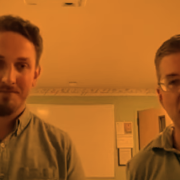I am delighted to see a new edition of The Shallows: What the Internet is Doing to Our Brains, featuring a new Afterword about smartphones and social media. On his website, Nicholas Carr explains about this new edition of his controversial book.
My main take-away when I read the book’s first edition, is that material processed through screens goes into a different part of the brain than printed material. Carr cited research showing that some of the liabilities associated with absorbing information on the screen included,
- reduced long-term memory;
- erosion of conceptual and contextual thinking;
- reduced ability to grasp over-arching narratives of meaning (the big picture);
- reduced ability to make connections between different ideas and facts;
- reduced ability to put knowledge into schemas.
Carr shared discoveries from neuroscience showing just why reading off the screen disrupts interconnected thinking. It has to do with the difference between two types of memory.
Part of the brain’s short-term memory includes what is called “working memory.” This is the part of the brain that is filled with the content of our immediate consciousness – whatever we happen to be thinking about at the time. There is debate about how many things the working memory can attend to at any one time, but all agree that its storage capacity is limited. By contrast, the brain’s long-term memory can house an almost unlimited amount of content.
Information flows from the working memory to the long-term memory all the time. Suppose you are going about your day and you see a particularly beautiful horse. As you look at the horse, it fills your working memory. If, a year later, you remember the horse, then you are retrieving the thought or image of the horse from the long-term memory and putting it back into the working memory, where it had been when originally perceived.
Crucially, the long-term memory is not just a collection of random facts, images, or thoughts. Rather, the long-term memory stores information within structures that are called schemas. These schemas enable our long-term memories to become interconnected into larger architectures of meaning. It is often when we sleep that the brain organizes and reorganizes material from the long-term memory into schemas. Matthew Guyan called these schemas “organizational frameworks of storage (like filing cabinets).” These organizational structures in the brain enable knowledge not simply to be retained (and therefore available for retrieval into the short-term memory) but enable knowledge to be converted into intelligence and understanding. Schemas also enable individuals to make connections, to perceive patterns and narrative instead of disconnected particulars. Ultimately, schemas are important for the acquisition of wisdom. “The depth of our intelligence hinges on our ability to transfer information from working memory to long-term memory and weave it into conceptual schemas..” (The Shallows, p. 124)
Crucially, the conversion of material from the working memory into the long-term memory, and from the long-term memory into schemas, is not automatic. Remember that the working memory is small: it can only focus on a limited amount of information at any one time. Carr compares the working memory to a thimble, and the long-term memory to a bathtub. When information is mediated to us slowly, the thimble can be filled up through a steady drip and then transferred into the bathtub. But if our working memory is overloaded—as it can be with too many distractions, or with rapid thinking, multitasking, divided attention, and over-stimulation—then the thimble is too overwhelmed, and only a small portion of the working memory can be converted into the long term memory where schemas are formed. With too much cognitive load, our brains become lost in a sea of particulars without the ability to connect these particulars into larger structures of understanding. From Carr:
“Imagine filling a bathtub with a thimble; that’s the challenge involved in transferring information from working memory into long-term memory. By regulating the velocity and intensity of information flow, media exert a strong influence on this process. When we read a book, the information faucet provides a steady drip, which we can control by the pace of our reading. Through our single-minded concentration on the text, we can transfer all or most of the information, thimbleful by thimbleful, into long-term memory and forge the rich associations essential to the creation of schemas….
The information flowing into our working memory at any given moment is called our ‘cognitive load.’ When the load exceeds our mind’s ability to store and process the information—when the water overflows the thimble—we’re unable to retain the information or to draw connections with the information already stored in our long-term memory. We can’t translate the new information into schemas. Our ability to learn suffers, and our understanding remains shallow.”
It is during times when it feels like the brain is at rest (times of quiet reflection and sleep) when we build up conceptual schemas based on the information our memory has retained. As such, our memories play a crucial role in making us who we are since the depth of our intelligence (and therefore our personality) hinges on the mind’s ability to consolidate our memories into schemas, to let everything we remember foment and crystalize into wisdom. For there can be no knowledge without memory, and there can be no wisdom without knowledge. But this will not happen automatically if we have left the working memory in a condition of overload. Realizing the limitations of our working memory should challenge us to take stock of how we treat our brain, and it should encourage us not to let our working memory get overloaded.
By its very nature, reading on the screen encourages the type of information overload that mitigates against the formation of schemas, and therefore long-term wisdom. Computer use involves working within an ecosystem of distraction technologies that inevitably burdens the prefrontal cortex, leaving less resources for consolidation and schema-formation. This has been shown in study after study, many of which are quoted in The Shallow.


